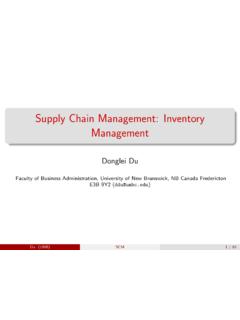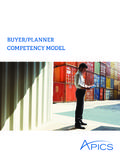Transcription of Strengths, Weaknesses, Opportunities and Threats (SWOT ...
1 0 | P a g e Strengths, Weaknesses, Opportunities and Threats (SWOT) Analysis JOLIET JUNIOR COLLEGE APRIL 2015 1 | P a g e TABLE OF CONTENTS Introduction .. 2 Background .. 2 Purpose .. 2 Executive Summary .. 2 Regional Data Overview and Implications .. 3 3 Labor Market 4 Strengths Assessment .. 4 Rigorous Academic Programs .. 4 Employee Commitment/Engagement .. 4 Physical Infrastructure .. 4 Employer Support Foundation .. 5 Sustainability Initiatives/Practices .. 5 Weaknesses Assessment .. 5 Data Availability, Integration and Alignment .. 5 Communications and Marketing .. 5 Academic Counseling .. 6 Business Process Confusion .. 6 Education Pathways Barriers and Transparency .. 6 Opportunities Assessment .. 6 Employer Engagement/Work-Based Learning .. 6 Articulation Options/Partnering with Universities.
2 6 External Image Improvement .. 7 Diversity of Entering Students .. 7 Data-Informed Student Success .. 7 Threats Assessment .. 7 State 7 Federal Funding and Policy Uncertainty .. 7 Enrollment Levels .. 7 Perception of College .. 8 Increased Higher Education 8 Conclusion .. 8 THOMAS P. MILLER AND ASSOCIATES, 2015 2 | P a g e INTRODUCTION Background The Joliet Junior College Strategic Planning Committee and Thomas P. Miller and Associates (TPMA) Team have developed this Strengths, Weaknesses, Opportunities , and Threats (SWOT) Analysis report to organize and appropriately reflect data received through surveys, facilitated sessions, and quantitative sources for use in the Strategic Planning process. The purpose of the SWOT Analysis is to highlight emerging themes from the data gathering process that will serve as a focus for the development and implementation of goals and strategic priorities.
3 The SWOT Analysis is a high-level look at where Joliet Junior College (JJC) can build on current successes and focus on implementing continuous improvement methods to correct current weaknesses or Threats . Based on the information compiled in the SWOT Analysis, the JJC Strategic Planning Committee and the TPMA Team will then turn to drafting a Strategic Plan that will incorporate all of the data, feedback, and information gleaned to-date from data sources, as well as internal and external stakeholders. Purpose The purpose of the JJC SWOT Analysis is to identify both the internal and external factors that may impact JJC s performance over the next three to five years. More specifically, this SWOT Analysis serves as a bridge between the data and feedback gathering process and the first draft of the Strategic Plan.
4 By conducting a SWOT Analysis, the JJC Strategic Planning Committee and TPMA Team can validate both what is working and what is concerning for internal employees and external stakeholders. This, in turn, will lead to a Strategic Plan draft that incorporates the appropriate mission, vision, goals, and strategic priorities where specific organizational activities can be implemented that lead to improved performance and success in delivering a quality education to a diverse student body. Executive Summary Using the extensive employee, student, employer, and community feedback gathered, and after analyzing this data and both regional economic and demographic data, a concise understanding of JJC strengths, weaknesses, Opportunities , and Threats has emerged and is concisely displayed in the graphic below.
5 Much overlap exists between the four quadrants, and many of the elements intertwine and should be seen as such, rather than standing alone. JJC s strengths lie in the fact that it is meeting its core mission strong academic programs and has both physical and people assets that serve as an important foundation from which to build. In particular, JJC has employees who are committed to the mission of JJC and want to further improvements that will increase organizational performance and student success. JJC s weaknesses are primarily process driven issues that need attention. The importance of addressing these weaknesses needs to be underscored as improvements in organizational performance and employee morale/satisfaction can be realized. JJC s Opportunities are externally-centric elements that provide JJC with areas of focus that will build on current strengths and provide improved Opportunities and options for students to progress through their academic experiences.
6 JJC s Threats are externally-centric elements that must be understood and managed as JJC implements improvements, new initiatives and continuous improvement processes. THOMAS P. MILLER AND ASSOCIATES, 2015 3 | P a g e REGIONAL DATA OVERVIEW AND IMPLICATIONS Demographics The overall population in the Joliet Junior College region (comprising of Will, Livingston, Grundy, Kendall, DuPage, La Salle, and Kankakee counties) is projected to increase three percent over the next five years. Within this population increase, the number of White Hispanics in the region, as well as individuals aged 25-34 years, are also expected to increase the most in the next five years. To account for these demographic changes in the region, JJC should take action to understand and plan for the educational needs of this non-traditional student age group and the growing Hispanic population, many of whom may have English as a Second Language.
7 For instance, non-traditional adult students may require accelerated academic programming in order to engage or return to the workforce as quickly as possible. Demand-driven education is a great way to integrate hands-on and traditional classroom experience into an accelerated blended program for non-traditional students. See Opportunities section for more information on this type of education. STRENGTHS RIGOROUS ACADEMIC PROGRAMS EMPLOYEE COMMITMENT/ENGAGEMENT PHYSICAL INFRASTRUCTURE EMPLOYER SUPPORT FOUNDATION SUSTAINABILITY INITIATIVES/PRACTICES WEAKNESSES DATA AVAILABILITY, INTEGRATION AND ALIGNMENT COMMUNICATIONS AND MARKETING ACADEMIC COUNSELING BUSINESS PROCESSES CONFUSION EDUCATION PATHWAYS BARRIERS AND TRANSPARENCY Opportunities EMPLOYER ENGAGEMENT/WORK-BASED LEARNING ARTICULATION OPTIONS/PARTNERING WITH UNIVERSITIES EXTERNAL IMAGE IMPROVEMENT DIVERSITY OF ENTERING STUDENTS DATA-INFORMED STUDENT SUCCESS Threats STATE FUNDING FEDERAL FUNDING AND POLICY UNCERTAINTY ENROLLMENT LEVELS PERCEPTION OF COLLEGE INCREASED HIGHER EDUCATION OPTIONS (PROPRIETARY COLLEGES) THOMAS P.
8 MILLER AND ASSOCIATES, 2015 4 | P a g e Associate s degree attainment for the Joliet region is comparable to that of the rest of the nation (8%).1 This attainment rate is expected to increase by over the next five years, suggesting that measurable recruitment and enrollment goals are needed to enroll the increasing number of area residents that will want to obtain a higher degree. In addition, Joliet Junior College will need to set measurable goals to increase area residents attainment of associate s degrees to align with area need. Labor Market Trends Employment data from the JJC region shows that a number of industries will experience growth over the next five years including: Professional, Scientific, and Technical Services; Educational Services; Health Care and Social Assistance; and Transportation and JJC should focus on these industries the coming years in terms of program expansion and/or development.
9 More specifically, the top occupations that will see the most growth over the next five years include: Personal Care Aides; Home Health Aides; Computer User Support Specialists; and Computer System Therefore, IT and medical professions will see a need in the coming years, and could be a focus of JJC in program expansion and/or development. STRENGTHS ASSESSMENT Rigorous Academic Programs By all accounts, JJC has strong and rigorous academic programs that provide students with the knowledge, skills, and competencies needed to further their education through transfer or enter immediately into the workforce upon completion of the program. Student interviews and surveys demonstrate a high degree of confidence and satisfaction in their academic programs, as well as the faculty advising they receive concerning their academic options and pathways.
10 Employers report that JJC students in a variety of fields are receiving the appropriate competencies and skills acquisition through their programs of study. JJC also has a variety of academic programming that meets both student and employer needs in a wide range of employment sectors and academic fields. Employee Commitment/Engagement Facilitated sessions and employee survey responses indicate a high level of employee engagement and interest in the success of the college and its students. While some frustrations and issues exist that should be addressed, for the most part, employees expressed concerns in a positive manner with an interest toward getting problems resolved. Overall, the most important element is a belief in the mission of JJC, and while the actual mission statement will be revised through the strategic planning process, employees expressed important core values and understanding of what the core mission of JJC involved and how the organization should function.




